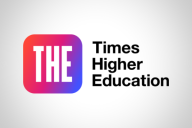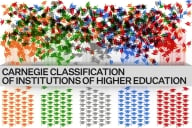You have /5 articles left.
Sign up for a free account or log in.
For more than four decades, the Carnegie Foundation for the Advancement of Teaching has produced the definitive classification of higher education institutions. Roughly every five years, the foundation’s highly anticipated grouping of colleges and universities offers a useful organizing structure of the higher ed landscape -- for example, giving foundations, government agencies and others that want to support or study, say, small rural community colleges or intensive research universities the information they need.
To Carnegie's dismay, the foundation's sorting also sends some institutions into fits of anger or excitement over perceived insult or approval for how they are classified compared to their peers, in large part because the classifications are used for rankings.
Those who eagerly await the release of the Carnegie Classifications of Institutions of Higher Education will be relieved to know that the next iteration is on schedule for late 2015. But the classifications will not come from the Carnegie Foundation – and the reasons why Carnegie is relinquishing them and new organizations are taking them on say a lot about the New World Order in postsecondary education.
Beginning next year, Indiana University’s Center for Postsecondary Research will produce the Carnegie Classifications (as they will continue to be called). Carnegie and Indiana agree that the classifications need a potentially major refresh to continue to accurately reflect the increasingly complex and sometimes confounding landscape of higher education, what with many community colleges offering four-year degrees, more and more liberal arts institutions starting pharmacy schools and other graduate programs, and joint ventures between colleges proliferating, to name just a few of the sweeping trends.
Carnegie officials recognize that it “would be irresponsible [for the classifications] to not acknowledge and respond to the current landscape,” and that doing so would be a major undertaking, said Gay Clyburn, associate vice president of public affairs at the foundation.
At the same time, the foundation’s priorities have shifted under President Anthony S. Bryk to focus on the ways in which networks of players can collaborate to attack big problems (community colleges working on developmental math, school districts teaming up to support new teachers). “With our limited resources, we just weren’t able to commit to doing that, and doing it right,” Clyburn said.
Indiana’s postsecondary center saw several reasons why it thought it could bring “fresh energy” to the daunting task of a potentially major revamping of the hugely important resource for higher education institutions and policy makers, said Victor Borden, professor of higher education and student affairs at Indiana’s School of Education, who will direct the project for the postsecondary center.
First, Borden said, the center has developed a “cluster” of programs and projects related both to defining the landscape of higher education (like its work with the National Student Clearinghouse) and to improving the effectiveness of institutions, such as the National Survey of Student Engagement. (And it is no coincidence that NSSE’s current director, Alexander C. McCormick, spent years working on the classifications at Carnegie.)
Those and other projects have given the Indiana center the expertise it needs and the interest to lead a mammoth undertaking of crafting a classification that better reflects what higher education looks like today, Borden said, so that policy makers and campus leaders can make better decisions and researchers can better understand the enterprise.
Second, and perhaps just as importantly, Indiana has a new and powerful ally also interested in a possible remake of the closest thing there is to a map of higher education: the Indianapolis-based Lumina Foundation.
As part of an event Wednesday at which the foundation also unveiled a new version of its Degree Qualifications Profile, Lumina announced that it would give the Indiana center $500,000 to help it explore the possibility of expanding the Carnegie Classification to include non-institutional providers of credentials, given the growth to date (and the greater expansion Lumina and others predict) of companies, nonprofit organizations, and others that offer certificates, badges and credentials of various sorts.
Borden said that the staff at Indiana's postsecondary center, in collaboration with scholars around the country, would undertake a "substantial" revision of the classifications by 2018 to make them more reflective of the state of postsecondary education today, and that including non-degree credentials would be among the possible changes.









